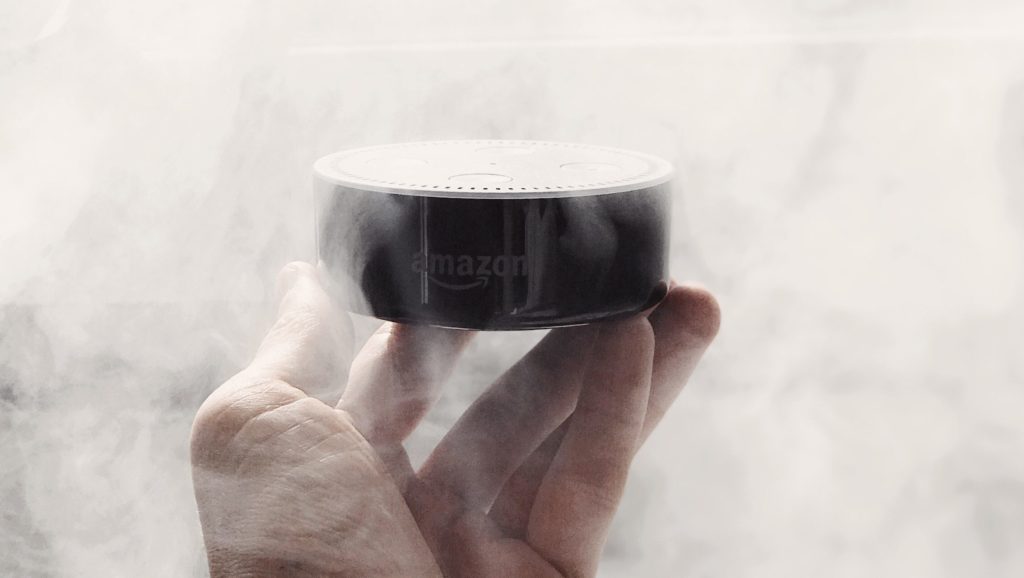Following The World Federation of Advertisers launch of its Voice Coalition, NDA is running a series of articles looking at the future of voice commerce, asking industry experts for their views on its opportunities.
By: Daniel Mathew, VP UK, Uberall
With the help of digital assistants like Alexa and Google Assistant, today’s voice shopper is ordering groceries, toiletries and even pizza without ever touching a smartphone or computer. Among consumers who regularly use voice assistants, nearly half have shopped via voice, as reported by SUMO Heavy.
Many of these digital assistants are found in the home — more UK households now own a smart speaker than a pet hamster, according to Argos — but voice assistants are most commonly used on smartphones, for the simple reason that many more people already own smartphones than smart speakers, currently over 50 million people in the UK, according to Statista.
Though voice shopping is great for purchases where the products are known and the items are repeat buys, voice “browsing” remains limited, and voice shopping isn’t at the point that you can buy anything you find on the internet using only voice commands, without the support of mobile apps or chatbots.
Still, with consumers increasingly using voice assistants — on smartphones, at home and in voice-enabled cars — and voice tech consistently improving, voice commerce will inevitably continue to grow. It’s comes as no surprise, then, that brands are beginning to sit up and take notice.
Changing consumer habits
One area of voice commerce that has already had a marked effect on consumer behaviour is voice search that drives in-store purchases. Uberall’s survey data reveals that 82% of smartphone users have searched for products and services “near me,” and 48% of voice search users have searched for local business information.
These “near me” searches not only guide consumers to where they need to go, it also helps them decide on which goods and services to buy in the first place. When consumers ask Siri, “Where’s the nearest sporting goods store?”, Siri introduces new and unfamiliar options, and can transform online voice search into in-store commerce.
Consumers using voice search to find products and services, particularly for businesses ‘near me,’ will undoubtedly affect the way consumers select brands and businesses will need to adapt to these evolving customer behaviours.
Because voice search only returns the highest ranked and most geographically relevant results, consumers are presented with a limited number of choices, in a fixed radius. Only the brands with the best online visibility will be findable by consumers. In order for brands to be discoverable through voice search by these potential customers, they’ll need to proactively manage their online visibility.
Time for a change
Many brands aren’t even remotely close to being prepared for voice search. Research by Bing Ads shows that only 2% of marketing budgets are being spent on voice technology. What’s more, research has found that over half of shoppers would be interested in using voice during the purchasing, but are left feeling frustrated as only 23% of brands offer that service.
Brands need to change their tune and prepare for the uptake in voice search by improving their local SEO. Local SEO is the optimisation of a business’s location visibility online to reach consumers who are searching for goods and services in the local area.
The first step a business can take to build local SEO is to ensure the business has accurate business listings — opening hours, address, contact details. Only 3.82% of brands had correct information online for their physical locations across multiple online directories, per Uberall data. Whilst missing information or inaccuracies on online business listings may seem trivial, inaccurate listings are a negative ranking factor and can significantly hinder online visibility.
Google My Business, Yelp and other online directories all cross reference each other for accuracy, and simple mistakes in a business’s information on one of these platforms can negatively affect search engine rankings, causing a brand to drop from those all-important top results.
Local SEO is also impacted by such factors as the business’s online reviews rating. If a consumer asks Google Assistant for the ‘top shoe store near me,’ the range of options provided will be based on Google review ratings. Consequently, actively managing online reviews on the numerous channels where consumers are talking about your brand is another way to strengthen local SEO.
Voice commerce — an opportunity for brands
The voice commerce landscape is changing and it’s time that brands did likewise. To adapt to this new way of consumer purchasing, brands must assess how voice commerce fits in with their business offering, and how to create the strongest online presence possible. It looks like voice search isn’t going anywhere, and brands that rise to the challenge will ultimately be well-rewarded.









